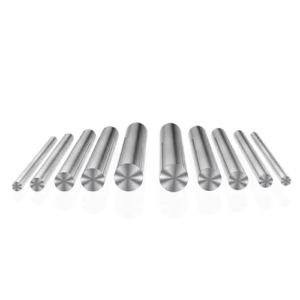Introduction

Stainless steel is a ubiquitous material in various industries, renowned for its durability, corrosion resistance, and aesthetic appeal. Among the many grades of stainless steel, 304 stainless steel stands out as one of the most widely used and versatile options. In this blog post, we will delve into the secrets of 304 stainless steel, exploring its composition, properties, applications, and more.
Understanding 304 Stainless Steel
304 stainless steel is an austenitic stainless steel alloy containing chromium and nickel, which provide its excellent corrosion resistance properties. Its composition typically includes 18% chromium and 8% nickel, making it highly resistant to corrosion from various chemicals, moisture, and atmospheric conditions. Additionally, it contains small amounts of other elements such as carbon, manganese, and silicon, which contribute to its mechanical properties and weldability.
Properties of 304 Stainless Steel
- Corrosion Resistance: One of the most remarkable features of 304 stainless steel is its exceptional corrosion resistance. It is resistant to oxidation, rusting, and staining, making it ideal for applications in harsh environments such as marine and chemical industries.
- Strength and Durability: Despite its excellent corrosion resistance, 304 steel also offers good strength and durability. It exhibits high tensile strength, allowing it to withstand considerable loads and stresses without deforming or breaking.
- Heat Resistance: While 304 stainless steel is not as heat-resistant as some other stainless steel grades, it maintains its mechanical properties at moderately high temperatures. It is suitable for use in environments with temperatures up to 870°C (1600°F) for intermittent service and 925°C (1700°F) for continuous service.
- Hygienic Properties: Due to its smooth surface finish and non-porous nature, 304 steel is easy to clean and sterilize, making it an excellent choice for applications in the food and pharmaceutical industries.
Applications of 304 Stainless Steel
304 stainless steel finds widespread applications across various industries due to its versatile properties. Some common applications include:
- Food Processing Equipment: Stainless steel 304 is extensively used in the manufacture of food processing equipment such as tanks, pipes, and machinery components due to its hygienic properties and resistance to food acids and chemicals.
- Architectural and Construction: Its aesthetic appeal, durability, and corrosion resistance make 304 steel a popular choice for architectural elements such as facades, handrails, and decorative panels, as well as for structural components in construction projects.
- Medical Devices: The biocompatibility and sterilizability of 304 steel make it suitable for medical devices and surgical instruments where cleanliness and corrosion resistance are essential.
- Automotive Industry: Components exposed to corrosive environments, such as exhaust systems and trim, often utilize 304 steel due to its corrosion resistance and aesthetic qualities.
Comparison of Stainless Steel Grades

| Property | 304 Stainless Steel | 316 Stainless Steel | 430 Stainless Steel |
|---|---|---|---|
| Corrosion Resistance | High | Very High | Moderate |
| Strength | Good | Very Good | Moderate |
| Heat Resistance | Moderate | High | Moderate |
| Cost | Moderate | High | Low |
Conclusion
304 stainless steel is a versatile and reliable material that has found its way into numerous industrial and commercial applications. Its combination of corrosion resistance, strength, and aesthetic appeal makes it an excellent choice for a wide range of projects. By understanding its properties and capabilities, engineers and designers can leverage the benefits of 304 steel to create innovative solutions that withstand the test of time.
FAQ
Q:Is 304 stainless steel magnetic?
A:While 304 stainless steel is not inherently magnetic, it can become magnetic after cold working or welding processes.
Q:Can 304 stainless steel rust?
A:While it is highly resistant to rust and corrosion in most environments, prolonged exposure to certain chemicals or extreme conditions can lead to corrosion. Proper maintenance and care are essential to prevent rusting.
Q:What is the difference between 304 and 316 stainless steel?
A:Both 304 and 316 stainless steel are austenitic grades, but 316 contains additional molybdenum, which enhances its corrosion resistance, particularly against chlorides such as those found in seawater. As a result, 316 stainless steel is often preferred for marine and coastal applications.
Q:Can 304 steel be welded?
A:Yes, 304 steel is readily weldable using common welding techniques such as TIG, MIG, and resistance welding. However, proper welding procedures and post-weld treatments are necessary to maintain its corrosion resistance and mechanical properties.
Q:Is 304 stainless steel suitable for outdoor applications?
A:Yes, 304 stainless steel is commonly used for outdoor applications due to its excellent corrosion resistance. However, factors such as exposure to harsh chemicals, salt spray, and extreme temperatures should be considered when determining its suitability for specific outdoor environments.
